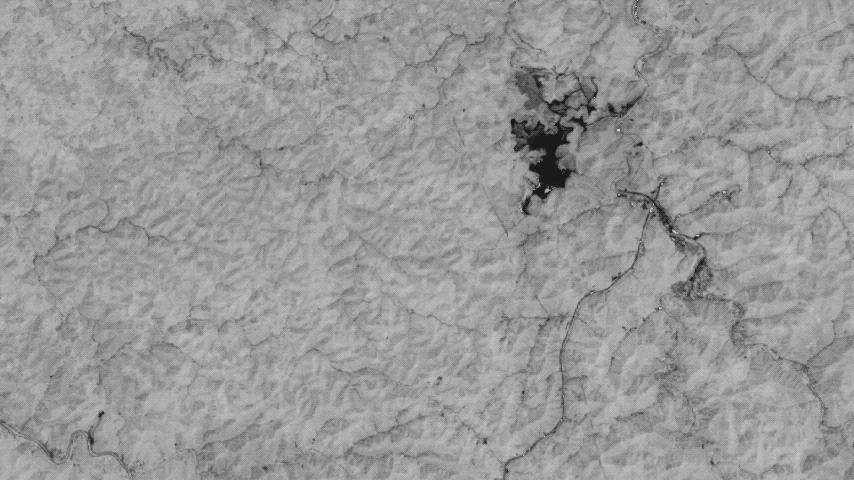All the trees cut and land lost due to surface mining in Central Appalachia.GIF: Courtesy of SkyTruth
Coal has completely transformed the landscape in Central Appalachia. This region’s rich history of coal mining dates back to the 18th century. Surface mining, however, is a more “modern” form of extracting the dirty fuel source that requires clearing forests and sometimes blowing up mountains to reach the rich coal underneath.
A new study out Wednesday in PLOS ONE maps how these mines have converted the region’s mountainous lush forests into desolate landscapes of destruction.
From 1976 to 2015, strip mining and mountaintop removal contributed to wiping out about 1.5 million acres of forests across 74 counties in Kentucky, Tennessee, Virginia, and West Virginia. For reference, that’s three times the size of the Great Smoky Mountains National Park.
The study was authored by researchers from Duke University as well as SkyTruth and Appalachian Voices, environmental nonprofits that oppose surface mining. They conducted the study by looking at satellite images, identifying active mines by analysing the normal amount of vegetation in the region and looking for areas where tree cover was low or nonexistent.
Their algorithms excluded any regions that were not within a mine permit boundary and likely to be forested. They also removed any tiny parcels of land unlikely to be an actual mine. In addition to looking at land use change, they also found that current coal production could help predict the amount of land converted into active mining five years later by comparing the results with federal mine production data. For every metric ton of coal a company produces, roughly 129 square feet are mined. This is a dramatic increase compared to the less than 10 square feet required per every metric ton of coal that a 2013 study found.

The expansion of the Hobet Mine in West Virginia from 1985 to 2015.GIF: Courtesy of SkyTruth
Given the reliance on satellite images, however, there’s a chance some non-mines were included because the model couldn’t distinguish a general site with low vegetation from one that’s actually a mine. Cloud cover also meant they had to ditch some satellite imagery, adding another layer of uncertainty to the analysis.
This new study sheds light on the ways surface mining has changed the landscape in an iconic part of the U.S., which now has valleys higher in elevation and mountain ridges that are broader and lower in elevation, per an analysis in 2013. This messes with the way plants grow and, well, the animals that rely on them, too.
Mining also messes with people’s health, too. The region is now dealing with a recent climate change thing.
Coal isn’t the industry that it used to be with production and prices dropping across the board. That hasn’t stopped the industry from stripping land of its other natural resources, though, as this new study clearly shows. Every time a surface mine is excavated, that means ecosystems are cut apart, wildlife loses habitat, and water is threatened by pollution, per the Environmental Protection Agency.
That’s why these two groups behind the study are against mining. Instead of creating new mines for this antiquated fuel source, they suggest putting coal miners to work reclaiming the abandoned mines. That’s one way to leave the destruction behind for good.
